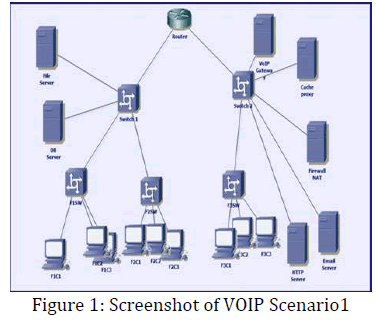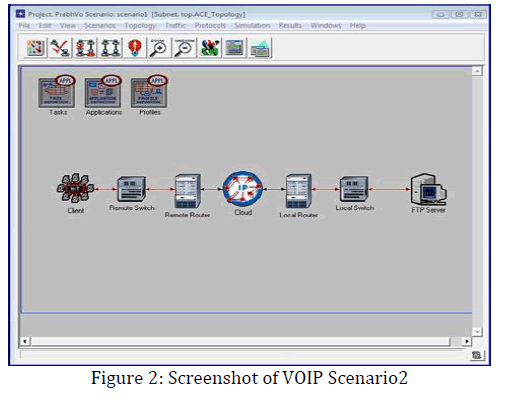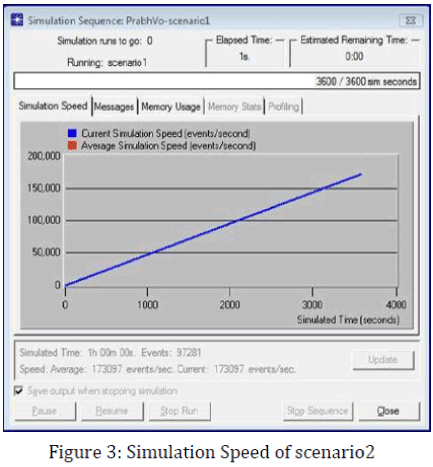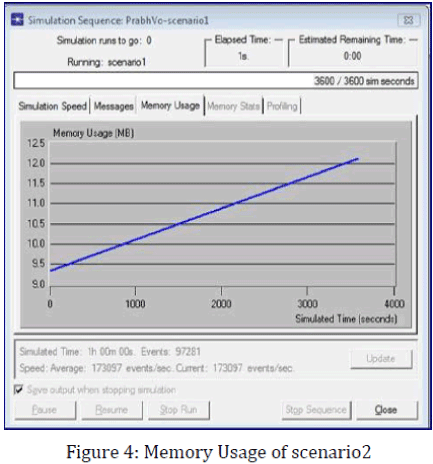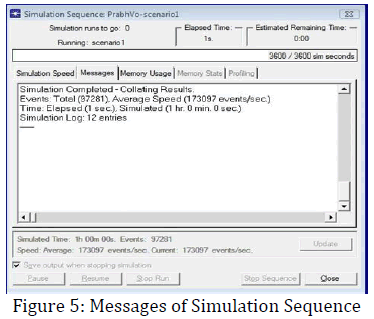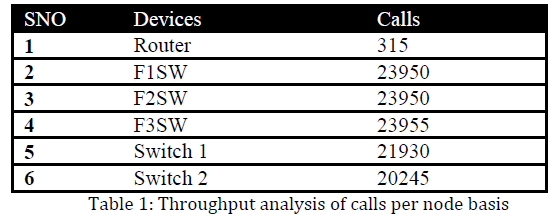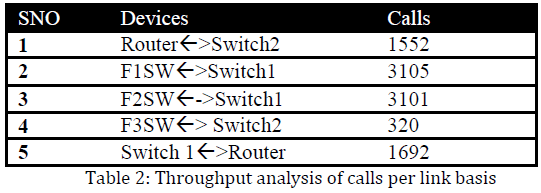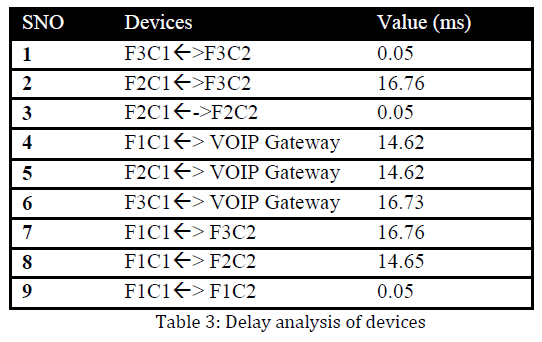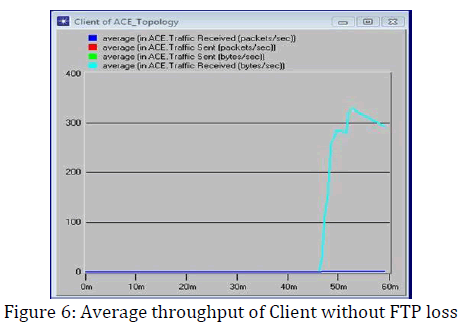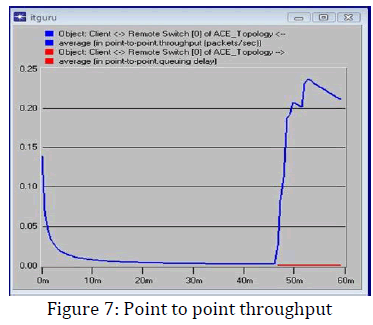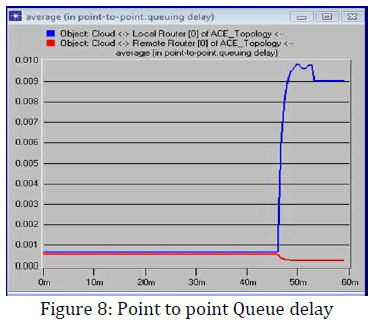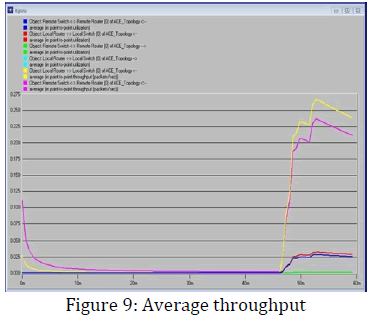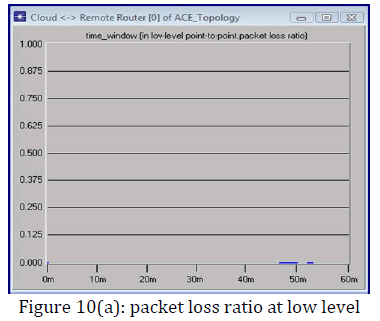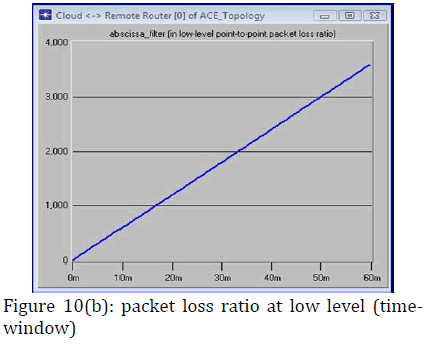Research Article Open Access
Analysis of Effect of Handoff on Audio Streaming in VOIP Networks
Shivani Koul1* and Sandeep Singh Kang21M.Tech (CSE), Department of Computer Science and Engineering, C.G.C, Punjab Technical University, Jalandhar, India
2Associate Prof, Department of Computer Science and Engineering, C.G.C, Punjab Technical University, Jalandhar, India
- *Corresponding Author:
- Shivani Koul
M.Tech (CSE), Department of Computer Science and Engineering C.G.C
Punjab Technical University, Jalandhar, India
E-mail: shivanikoul2@gmail.com
Visit for more related articles at International Journal of Advance Innovations, Thoughts & Ideas
Abstract
The use of wireless networks has widely increased beyond simple text and data transmission. With the increasing need for transmission of audio and video data across networks (wired and wireless alike), the need to enhance the Quality of Service (QoS) of multimedia transmission has also increased. Wireless networks offer the benefits of increased productivity, easier network expansion, flexibility, and lower the cost of ownership. On the other hand, wireless data networks present a more constrained communication environment compared to wired networks. Because of fundamental limitations of power, available spectrum and mobility, wireless data networks tend to have
less bandwidth, more latency, less connection stability, and less predictable availability. While fundamentals of communication and security of wired and wireless networks are largely similar, the limitations of WLANs impose more constraints on the quality of service and security of wireless networks. The deployment of VoIP over WLANs however poses significant challenges and may raise several deployment issues. In this paper, two different experimental scenarios have been considered and various observations have been made during the course of simulation. These two experimental scenarios are based on horizontal and vertical handoff. These two scenarios have been simulated using OPNET simulator.
Keywords
VOIP, Handoff, QoS, WLAN
Introduction
The Internet is evolving into a universal communication network and it is contemplated that it will carry all types of traffic, including voice, video and data. Among them, telephony is an application of great importance, particularly because of the significant revenue it can generate. In order for the Internet to constitute an attractive alternative to the traditional Public Switched Telephone Network (PSTN), it must provide high quality “Voice over IP” (VoIP) services [1].
VoIP [2] is the technology in which voice traffic can be transmitted over packet switched IP based networks. It is also popularly known as IP telephony, Internet telephony, Voice over broadband or broadband telephony [3]. VoIP uses a data network, typically the Internet, to serve as the transmission medium for voice data transfer. This is due to the many advantages of VOIP-based communication, including lower cost as well as the capability of providing integrated data, voice, and video, a larger variety of features and more value-added services that the VoIP deployment over data networks is gaining popularity these days.
Problem Formulation
Despite rapid expansion and improvement of the underlying infrastructure, quality-of-service (QoS) is still one of the major challenges to deploy voice/audio in the networks. When deploying a new network service such as VoIP over existing network, many network architects, managers, planners, designers, and engineers are faced with common strategic and sometimes challenging questions: What are the QoS requirements for VoIP? How will the new VoIP load impact the QoS for currently running network services and applications? Will my existing network support VoIP and satisfy the standardized QoS requirements? If so, how many VoIP calls can the network support before upgrading prematurely any part of the existing network hardware? [4]. The heterogeneity of today’s Internet also poses a major challenge for Audio delivery to users with various connection speeds, where scalability is highly desirable and studies the effects over the communication networks.
None of the commercial tools offer a comprehensive approach or methodology for successful VoIP deployment. In particular, none gives any prediction for the total number of calls that can be supported by the network taking into account important design and engineering factors. These factors include VoIP flow and call distribution, future growth capacity, performance thresholds, impact of VoIP on existing network services and applications, and impact of background traffic on VoIP [5].
Recently, VoIP over WLAN (Voice over WLAN, VoWLAN) has been emerging as an infrastructure to provide wireless voice service with cost efficiency. Driven by the demand from education, health care, retail, logistics, etc., VoWLAN will experience a dramatic increase in the near future. However, supporting voice traffic over WLANs poses significant challenges since the performance characteristics of the physical and MAC layers are much worse than that of their wireline counterparts. Therefore, the applications of VoWLAN raise several deployment issues concerning the system architecture, network capacity and admission control, QoS provisioning, etc [6,7]. In this paper, two different scenarios have been taken into account and observations have been made during the course of the simulation. These simulations are summarized in graphs followed by their analysis. The experimental scenario has been designed with the help of OPNET [5,8,9,10] simulator.
Experimental Scenarios
VOIP Scenario 1
The Figure 1 illustrates a typical network topology of a small enterprise residing in a high-rise building. The enterprise has a network of three floors or departments. The network shows the VoIP nodes of an H.323 [11,12] gatekeeper and gateway. The gatekeeper node handles signaling for establishing, terminating, and authorizing connections of voice calls. The VoIP gateway is responsible for converting VoIP calls to/from the Public Switched Telephone Network (PSTN). Other hardware requirements include a VoIP client terminal, which can be a separate VoIP device, i.e., IP phones, or a typical PC or workstation that is VoIP-enabled. In order to avoid having numerous PC nodes or IP phones per floor representing end-users (and therefore clutter the network topology diagram), Floor LANs have been simply modeled as a LAN that enclose an Ethernet switch and three designated Ethernet PCs used to model the activities of the LAN users. For example, Floor1 has three nodes (labeled as F1_C1, F1_C2, and F1_C3). F1_C1 is a source for sending voice calls. F1_C2 is a sink for receiving voice calls. F1_C3 is a sink and source of background traffic. This model allows for generating background traffic and also establishing intra-floor calls or paths from F1_C1 and F1_C2, and passing through the floor switch of F1SW. The sending and sinking PC nodes of VoIP (e.g. F1_C1 and F1_C2) have infinite capacity and there is no limit on how many calls can be added or received by them. The signaling traffic involving the gatekeeper is only generated prior to the establishment of the voice call and when the call is finished. This traffic is relatively limited and small compared to the actual voice call traffic. In general, the gatekeeper generates no signaling traffic throughout the duration of the VoIP call for an already established on-going call.
VOIP Scenario 2
The figure 2 shows the network topology that establishes the call from one station to another station and these stations work as home agent and foreign agent. This procedure also known as vertical handoff is executed when a mobile node moves from the coverage area of one AP to the coverage area of another AP. The handoff [13] process involves a sequence of messages being exchanged between the mobile node and the participating APs. The IP cloud represents the internet that connects the local router to the remote router. In this scenario, FTP service is employed that transmits the packets to the remote router when the local router gives the permissions. The TCP Reno (modified TCP protocol work for wireless networks) is configured at the two ends to provide a communication even when the wireless node comes out of the local area to communicate with foreign agent. This paper involves two approaches: one approach is based on first performing network measurements and then predicting the network readiness for supporting VoIP. The prediction of the network readiness is based on assessing the health of network elements. The second approach is based on injecting real VoIP traffic into existing network and measuring the resulting average throughput and queue delay.
Simulation Run
OPNET simulator is being used to determine the simulation speed at which all the network components are communicating with each other and memory usage of the CPU. Figure 3 indicates that the simulation speed for the VoIP scenario 2 is 3600seconds. Figure 4 shows the memory usage by the simulation of scenario 2. From the result, it is indicated that the total memory occupied by the simulation scenario at the simulation speed of 3600 seconds is 12MB. Figure 5 shows that the messages generated by the simulation sequence of OPNET simulator during checking of simulation speed and memory usage. It represents that simulation runs successfully without any error and shows the simulated and average time. The simulation log save the entries of the project detail and the time or date at which the above scenario being run.
Results & Discussions
This paper discusses the deployment of VoIP equipment, the number of VoIP calls that can be sustained by an existing network while satisfying Quality of Service (QoS) requirements of all network services and leaving adequate capacity for future growth. In this paper, the simulation approach has been applied on a typical network of a small enterprise. This research work presents a detailed description of simulation models for network topology and elements using OPNET. The simulator parameters were varied in following dimensions:
(1) VoIP traffic and QoS requirements.
(2) VoIP flow and call distribution.
(3) Measurement of background traffic.
(4) To calculate the throughput of the VOIP scenario.
(5) To investigate and calculate the queue delay of VOIP scenario.
The above parameters have been calculated by using OPENET simulator with the help of .Net framework. Before the simulation starts, OPNET has to be configured to obtain graphed results for numerous network components which include VoIP traffic, router, switches, and links. The VoIP traffic is modeled using ITU G.711 voice codec [14], with 32 byte of Voice frames and 160 Byte of VOIP packets. This has been applied for both scenarios i.e. scenario 1 and scenario 2.
Simulation Statistics of VOIP Scenario 1
The following Table 1 and Table 2 represent the Throughput Analysis statistics of VOIP protocols i.e. run in OPENET simulator with the help of DOT NET Environment. This table represents the maximum number of calls supported per node and per link basis.
The above table 1 and 2 represents the maximum number of calls supported by the network: 315 calls and the bottleneck was Router that performed packet delivery functions to all switches.
The table 3 shows the delay analysis of scenario 1 that has been simulated using OPENET. The delay varies in each device such as switch, gateway and is calculated in milliseconds (ms).
The devices shown in above table support on an average 313 calls and the maximum path delay is 16.76. This means from the above figures 1 and 2, the percentage of average supported calls is 91%.
Simulation Statistics of VOIP Scenario 2
The scenario2 represents the local and foreign agent. This means the VoIP is deployed on the two gateways where one person sends the call to another person that is far-away or not in the local area. In this scenario, an increase in the packet losses at FTP server is used to check the affected traffic in the server. The effect can be seen on the queuing delay experienced by the packets that are sent during simulation. The call is setup and TCP Reno is configured on both end with the help of OPNET Simulator and various QOS parameters are calculated.
Average Throughput of VoIP
Figure 6 shows the throughput when the packets are being sent from the sender node to the destination node. The maximum throughput indicates the maximum number of packets that are received by the destination per unit time. The use of 802.11 networks will handle a higher concentration of end users by offering greater total throughput. The figure 6 shows that the loss of FTP due to this a maximum losses occurred at 0 to 48 minutes when the connection established in between client and server to achieve the throughput.
Point to Point throughput of Client and Remote Router
Figure 7 represents the point to point throughput when a client is connected to a remote switch and vice versa. The average packet size is 300 and the queue delay is zero (means there is synchronous communication in between sender and receiver with no packet loss), after 24 ms the delay arises in the queue and throughput is degraded. But at 22 ms it has been average. The queue delay (after 24 ms) in the following figure represents, the delay of the queue of destination router i.e. when any source node sends the data to the destination and the queue is full, the packets are not received by the receiver and average throughput suffers.
Point to Point queue delay
The following graph is the time average of the Point to point queue delay between the IP Cloud Local Router and remote router (scenario2). While the average delay for the Local Router is higher (as expected), the load as a whole appears to be leveling off (that is, not monotonically increasing), indicating a stable network. The maximum queue delay has been calculated as approximately 10ms.
Average Throughput of all the devices
The figure 9 represents the average throughput of all the devices that have been used in the scenario 2 i.e. the remote router connected to local router via IP Cloud and all other devices connected to these routers. The average throughput has been calculated from the Local Router using OPENET Simulator to be 260 ms due to some queue delay (represented at figure 7) and 230ms for Remote router because of minimum delay in the router queue. Whereas the switches attached to these routers have zero delay.
Point to Point packet loss ratio
The figure 10 (a) represents the point to point packet loss ratio that is zero because when the voice is transmitted from the cloud to remote route, there is no handoff and noise in between the transmission of data. It is expected that when the voice is transmitted from remote router to the other client node, then there may be packet losses because of the load. Figure 10(b) represents the time window packet loss in between IP Cloud and Remote router. The Time-window utility has been used because figure 10(a) doesn’t clearly represent the time at which delay occurs and whether the delay has occurred or not. The figure 10(b) represents that the delay occurred at simulation time 48 to 50 minutes and some delay at 52 minutes. But the delay was zero.
Conclusion
The paper analyzes the throughput behavior of the 802.11 protocol running on local and remote routers. Simulations were carried out in OPNET by considering the entire IP stack implemented on top our IEEE 802.11 MAC and PHY and considered the simulation scenario in the presence of background traffic i.e. FTP sources as background traffic.
From the scenario 1, it has been concluded that simulator will be able to determine the number of VoIP calls that can be supported for an existing VPN (Virtual Private Network), i.e. a private data network with multiple branches or campuses connected via the Internet or private leased lines, that has been typically owned by a third-party network service provider.
From the scenario 2, it has been concluded that if the background traffic is more due to FTP traffic than due to this congestion, then this results in an increased delay which further leads to a decrease in throughput.
References
- Cena, G. Seno, L. Valenzano, A. Zunino et.al., “On the Performance of IEEE 802.11e Wireless
- Bur Goode, “Voice Over Internet Protocol (VoIP)”, In Proceedings of the IEEE, Volume 90,number 9, pp.1495-1517, September 2002.
- http://www.oxbridgewriters.com/essays/information-technology/voice-traffic-cantransmitted-over-packet.php
- Salah, K., “On the Deployment of VoIP in Ethernet Networks: Methodology and Case Study,”
- Salah, K., and Alkhoraidly, A., “An OPNET-based Simulation Approach for Deploying VoIP,” In International Journal of Network Management, John Wiley, Vol. 16(3-4) ,pp. 159-183, 2006.
- Lin Cai,Yang Xiao, Xuemin (Sherman) Shen, Lin Cai and Jon W. Mark, "VoIP over WLAN: Voice
- “Implementing VoIP Service Over Wireless Network” Breeze Access VL, White Paper.
- http://www.cse.unsw.edu.au/~jimw/PhD/appA.pdf, “A Simulation with OPNET”. Retrieved Sept 12, 2012.
- http://www.opnet.com/itguru-academic.
- http://www.scribd.com/doc/37951842/Introduction-to-OPNET-Simulator.
- http://www.cis.ohio-state.edu/~jain/cis788-99/voip_protocols/index.html.
- Martin P. Clark, ”Data Networks, IP and the Internet Protocols, Design and Operation”, John Wiley & Sons Ltd,2003.
- Ramani, I. and Savage, “Syncscan: practical fast handoff for 802.11 infrastructure networks”,In the Proceedings of the IEEE Infocom Conference 2005, Miami, FL, USA, March, 2005.
- VOIP Codec: The Possibilities Are Infinite, Fujitsu.
Relevant Topics
- Advance Techniques in cancer treatments
- Advanced Techniques in Rehabilitation
- Artificial Intelligence
- Blockchain Technology
- Diabetes care
- Digital Transformation
- Innovations & Tends in Pharma
- Innovations in Diagnosis & Treatment
- Innovations in Immunology
- Innovations in Neuroscience
- Innovations in ophthalmology
- Life Science and Brain research
- Machine Learning
- New inventions & Patents
- Quantum Computing
Recommended Journals
Article Tools
Article Usage
- Total views: 15260
- [From(publication date):
January-2013 - Apr 04, 2025] - Breakdown by view type
- HTML page views : 10630
- PDF downloads : 4630

